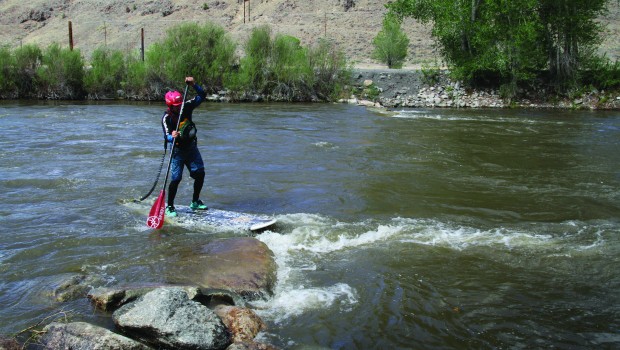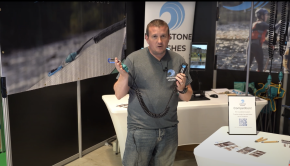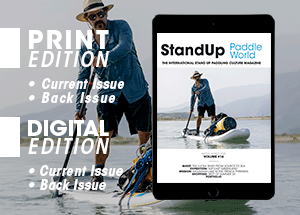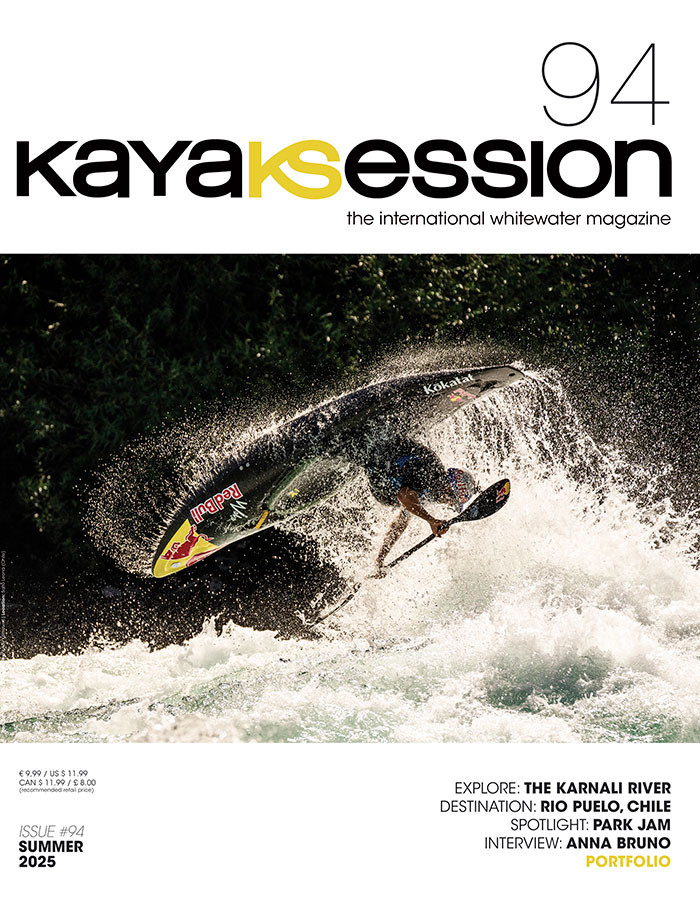Tips – An Introduction to Moving Water SUP Paddling
Whether paddling stand up on a quiet river or tidal bay, moving water is often part of the equation. Learning to stand up in current, or even in mellow whitewater, can be a lot of fun, but there are a few important things to know in order to be successful and safe when venturing into the flow. In this article, sup pioneer dan gavere offers tips on how to do it the right way. By Dan Gavere – Photos: Chris Emerick.
Identify the current’s strength and direction. Never venture into current that could wash you into a hazard like a dock, pier, submerged debris, or basically anything that may trap you or your board. The force of just a small amount of current can quickly pin you and your equipment, making for a dangerous situation. It is critical to identify the direction of the current, and know if you can paddle against it or not. If you plan to continue downstream, make sure you have a way to return to your starting point by either walking, biking, driving, or public transit.
Have the basics mastered on flat water before attempting anything with strong current or whitewater. Know how to control your board with the forward, turning, and bracing strokes before attempting to paddle on quickly moving water, even if there are no rapids.
The first thing to know when navigating moving water is how to identify and catch eddies. Eddies are calm spots in the downstream current found behind rocks and obstacles, and near riverbanks. Eddies are safe havens from the downstream current, and catching one is the only way to stop unless you can paddle upstream against the current.
Learn how to enter and exit eddies on a SUP.
Entering and exiting an eddy on a SUP board is a lot of fun but takes a little practice to master. First, locate a deep slow moving eddy to practice on. Enter the eddy with a little angle as you cross the eddyline—the interface between the downstream and upstream current. Facing downstream with your board pointed at 15-20 degrees across the eddyline, make certain you are ready for the direction change by bending your knees, and prepare to assist the turn by using forward sweep strokes on the opposite side of the board from the direction you are turning.The most critical technique to successfully perform an eddy turn is to slightly tilt the board to the inside of the turn like you would on a bicycle. A slight tilt of the board using your feet and legs is the key to success.
Some people with previous surf, skate, snow, wake, or skim boarding experience might find that standing in a surf stance with feet in either the “goofy” or “regular” position may be easier to perform this maneuver, and as you progress into stronger eddies the acceleration experienced will be easier to handle in this surf stance as well. Upon exiting the eddy the same technique is used, making sure to edge the board to the inside of the turn. This means transferring more weight to the right foot if turning right, or the left foot if turning left. If you find that the water is catching the board and flipping it under your feet, you are not giving it enough edge or you are not holding the board on edge throughout the turn. Having a friend watch you throughout the turn can help identify what your board is doing and why you might not be making successful turns in and out of the eddy.



The next technique used in navigating moving water while on a SUP board is the bow draw stroke. This is an advanced stroke that allows you to make small turn adjustments without having to change the side you’re paddling on. Essentially, this means you can turn to the right while paddling on the right, and turn to the left while paddling on the left. To perform this technique, place the paddle in the water with the blade approximately two feet away from the front edge of your board. When placing the paddle in the water, make the blade parallel to the edge of your board. The easiest way to do this is by rotating your top hand so that you thumb is pointed back towards you. Now draw the blade in toward your board, which will steer the bow of your board and allow for subtle changes in direction.
Some overall rules of the river and moving water safety:
Always paddle with a buddy.
Know the stretch of water you are attempting to navigate and any ask about possible hazards that may lie downstream. Learn how to identify them so you can exit the water safely ahead of time, and portage around if necessary.
Always wear a PFD (personal flotation device) and helmet.
Avoid trees, pilings, and other obstacles with water moving through or under them. These can be deadly even in the slightest currents and are called “strainers” for good reason.
Avoid using a leash attached to your ankle. PFD’s with safety/rescue belts are a great place to attach your leash. A waist belt leash can work too, but only if it can easily be accessed and released. In the case of an entrapment, this is critical.
Hopefully these tips will help you get a start in your moving water SUP adventures. Enjoy the challenge but remember that swift current and rapids have unique hazards that require care and attention. Once familiar with the techniques and the environment, however, a world of fun awaits!
 More info on Dan Gavere instructional books and Dvd’s: www.supinstruction.com
More info on Dan Gavere instructional books and Dvd’s: www.supinstruction.com











